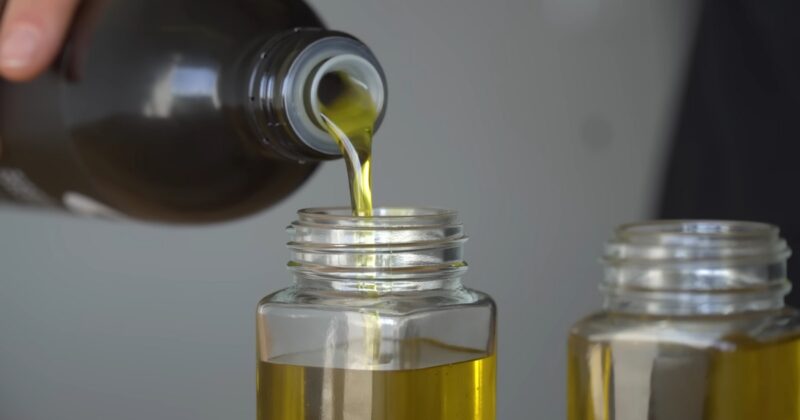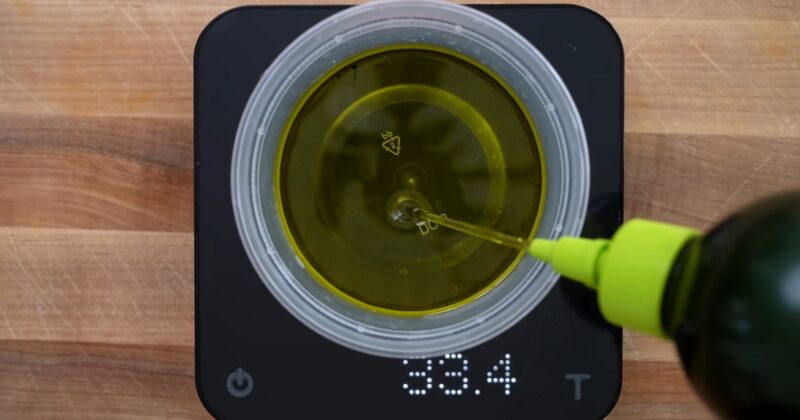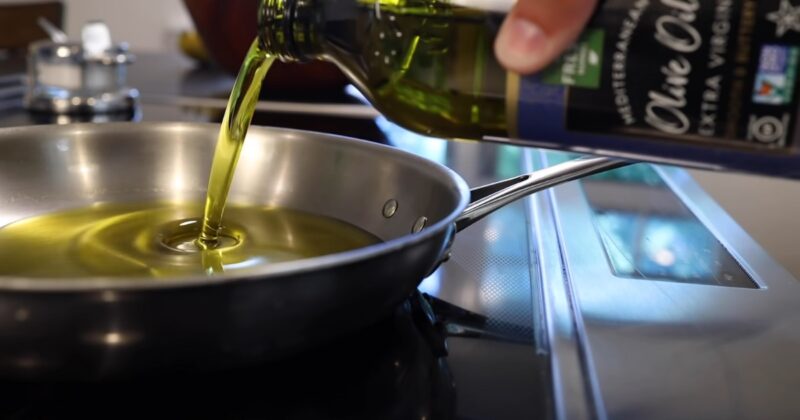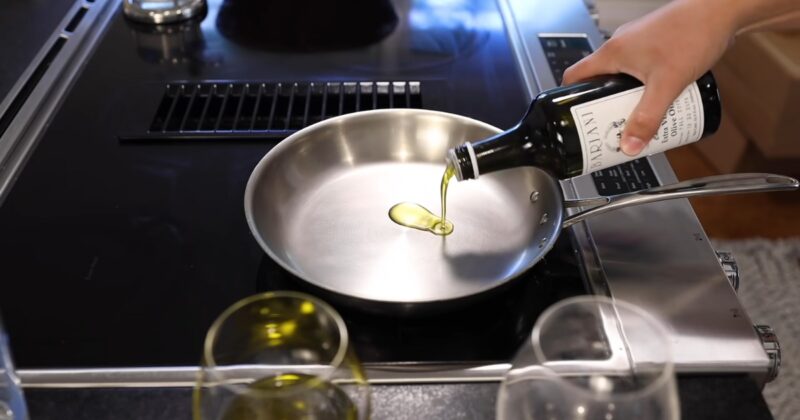Olive oil, a cornerstone of culinary traditions worldwide, plays a pivotal role in cooking, offering both flavor and nutritional benefits. Among its various types, extra virgin olive oil (EVOO) stands out for its quality and taste.
This blog post delves into EVOO’s world, unraveling its history, defining characteristics, and the stringent criteria it must meet. By understanding what sets EVOO apart, consumers can make informed choices, elevating their culinary experiences while reaping health benefits.
History of Olive Oil Production
The journey of olive oil production is steeped in antiquity, reaching back thousands of years to the Mediterranean basin, where it began. Early methods involved simple presses, where olives were crushed underfoot or with basic mechanical devices.
Over the millennia, these methods have seen remarkable evolution, from rudimentary techniques to sophisticated, mechanized processes. The introduction of grading systems was a significant advancement, categorizing oil by its quality and the intricacies of its processing methods.
This evolution mirrors the technological progress and growing esteem for olive oil, not just as a staple of culinary art but also for its medicinal and health-enhancing attributes. Such developments have solidified olive oil’s place in cultures around the world, reflecting its enduring legacy and versatility.
Definition of Extra Virgin Olive Oil (EVOO)

Extra virgin olive oil represents the zenith of olive oil quality, standing out through its extraction method and unique chemical makeup. The International Olive Council (IOC) specifies that EVOO must come from the first pressing of olives, using mechanical means without any chemical treatment.
This ensures the oil retains its natural flavors, vitamins, and minerals. To qualify as EVOO, the oil must exhibit perfect flavor and aroma with no defects, a testament to its superiority.
This rigorous standard includes specific limits on acidity, ensuring that only the finest oils achieve extra virgin status. If you want a tasteful definition of EVOO try https://morocco-gold.com/.
Characteristics of Extra Virgin Olive Oil
Extra virgin olive oil is renowned for its exceptional sensory characteristics, which include a harmonious blend of taste, aroma, and color, making each bottle a reflection of its unique origin. These characteristics are the result of a myriad of factors, such as the olive variety, the terroir of the grove, and the timing and method of harvest.
Processing techniques further influence these traits, ensuring that the essence of the olive is captured in every drop.
The resultant diversity in EVOO offerings means that connoisseurs can enjoy a vast array of sensory experiences, each bottle telling the story of its creation from grove to table. This uniqueness makes EVOO not just an ingredient but a centerpiece of culinary tradition and innovation.
Taste Profile of EVOO
The taste profile of extra virgin olive oil is richly diverse, offering a range from fruity and mild to robustly bitter and pungent. This spectrum of flavors makes EVOO versatile in culinary applications, and capable of complementing a wide array of dishes.
The depth of flavor in EVOO can transport one to the olive groves, with tasting notes that may include hints of almond, tomato, artichoke, and even fresh herbs, reflecting the oil’s terroir. Such complexity is the hallmark of high-quality EVOO, inviting enthusiasts to explore its myriad tastes and the stories they tell.
Aroma Profile of EVOO
The aromatic complexity of high-quality extra virgin olive oil is a testament to its excellence, with a range that includes grassy, peppery, and even floral notes. These aromas, which can also hint at the presence of fruits or nuts, are indicative of the oil’s freshness and the olive varieties from which it was pressed.
The preservation of these volatile compounds during the oil’s extraction and bottling is a delicate process, reflecting the care and expertise involved in producing EVOO. This olfactory bouquet enhances the culinary experience, adding depth and character to dishes and making EVOO a prized ingredient among chefs and home cooks alike.
Color of EVOO

The color of extra virgin olive oil, ranging from vibrant green to golden yellow, is influenced by the olive’s variety and maturity at harvest. While some believe color is an indicator of quality, it tells more about the oil’s character and origins than its purity or flavor.
True connoisseurs know that the essence of EVOO lies in its taste and aroma, not its appearance. The color variation celebrates the natural diversity of olive oil, reminding us of the agricultural and seasonal factors that contribute to each batch’s unique profile.
Health Benefits of EVOO
Extra virgin olive oil is a powerhouse of nutrition, offering more than just exquisite flavor. Its rich content of monounsaturated fats, antioxidants like polyphenols, and anti-inflammatory properties contribute to a myriad of health benefits.
Regular consumption of EVOO has been linked to improved cardiovascular health, including reduced risk of heart disease and lower cholesterol levels. Furthermore, the antioxidants present in EVOO can protect against oxidative stress, reducing the risk of chronic diseases and promoting overall health.
Importance of Quality Control in EVOO Production
In the production of extra virgin olive oil, stringent quality control is essential to ensure the product’s authenticity and purity. From the careful cultivation of olives to their meticulous harvesting and processing, each step is crucial.
Regulations and standards are enforced to deter adulteration and mislabeling, practices that can undermine consumer trust and the reputation of EVOO. By adhering to high standards, producers safeguard the integrity of their oil, ensuring that consumers receive a product that is not only of exceptional quality but also true to its label.
Tips for Choosing and Storing EVOO
To fully enjoy the sensory richness of extra virgin olive oil, selecting and storing it correctly is key. Consumers should seek out oils with a clear harvest date, as freshness is a critical determinant of quality.
Dark glass bottles or tin containers are preferred for their ability to protect the oil from light, which can degrade its flavors. Proper storage involves keeping the oil in a cool, dark place, away from heat sources, to maintain its integrity and flavor profile.
Culinary Uses of EVOO

The culinary versatility of extra virgin olive oil is unparalleled, suitable for a wide range of applications from cooking to finishing dishes. Its rich flavor profile can transform simple ingredients into gourmet experiences, underscoring EVOO’s role as a staple in kitchens worldwide.
Whether drizzled over salads, used in marinades, or added as a finishing touch to dishes, EVOO enhances flavors, adding depth and complexity.
Conclusion
Extra virgin olive oil is a testament to the art and science of olive oil production, embodying a rich history, rigorous standards, and a plethora of sensory experiences. By appreciating and understanding the characteristics that define EVOO, consumers can explore its diverse flavors and health benefits, enriching their culinary adventures.

